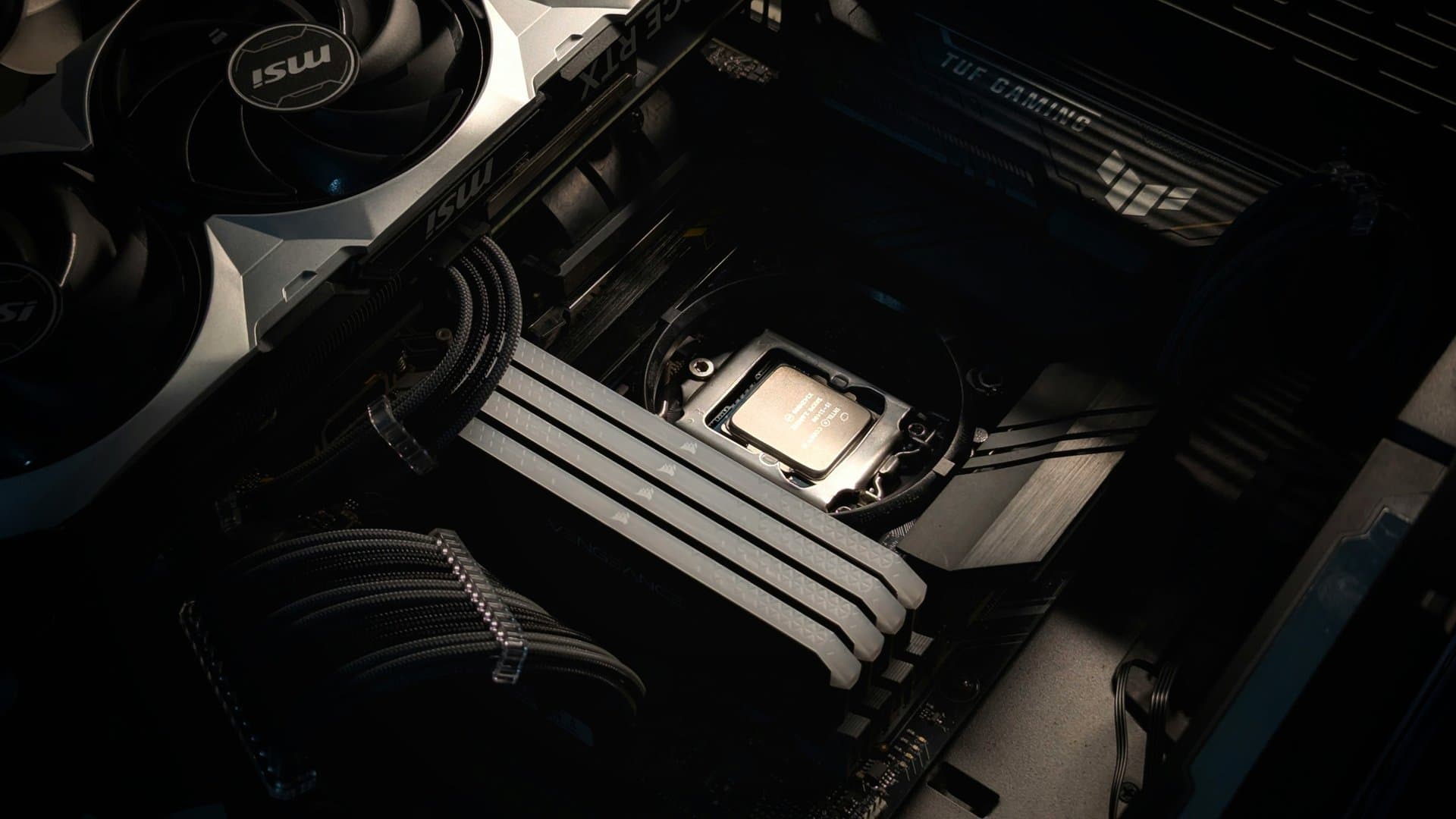Micron vs. NVIDIA: Which AI Hardware Stock Leads Growth Now?
Explore the AI hardware showdown between Micron and NVIDIA, uncovering key financial insights, growth forecasts, and valuation contrasts to help investors navigate the booming AI memory and GPU markets.

Key Takeaways
- Micron’s Q3 revenues and EPS surged 37% and 208% year-over-year, fueled by AI memory demand.
- NVIDIA’s data center revenues jumped 56% to $41.1 billion, driven by cloud and AI infrastructure.
- Micron’s fiscal 2026 EPS growth forecast of 62.4% outpaces NVIDIA’s 44.5%.
- Micron offers a lower forward price-to-sales multiple (3.58) compared to NVIDIA’s 17.4.
- Both companies play distinct but complementary roles in AI hardware ecosystems.

In the fast-evolving world of AI hardware, two giants stand tall: Micron and NVIDIA. While NVIDIA powers AI’s heavy lifting with its cutting-edge GPUs, Micron fuels the fire with advanced memory chips essential for AI’s data-hungry appetite. Their recent financial performances tell a story of booming demand and strategic positioning.
Micron’s third-quarter fiscal 2025 results dazzled with a 37% revenue jump and a staggering 208% EPS increase, riding the wave of AI memory needs. Meanwhile, NVIDIA’s data center revenues soared 56% year-over-year, reflecting its dominance in AI compute power. But which stock offers the better investment edge right now?
This article dives deep into their market roles, financial health, and growth outlooks, unpacking the AI hardware stock battle with clarity and actionable insights for investors seeking to ride the AI revolution.
Understanding AI Hardware Roles
Micron and NVIDIA are like two sides of the AI hardware coin. NVIDIA crafts the GPUs — the powerhouse chips that crunch AI’s complex calculations. Think of NVIDIA as the brain’s muscles, flexing to handle massive AI workloads in data centers, gaming, and autonomous vehicles.
Micron, meanwhile, supplies the memory — the vital fuel that stores and shuttles data swiftly to keep those GPUs firing on all cylinders. Its high-bandwidth memory (HBM3E) is prized for energy efficiency and speed, making it the perfect partner for NVIDIA’s latest GPUs like the GeForce RTX 50 Blackwell.
This symbiotic relationship means Micron’s success is tightly linked to NVIDIA’s product roadmap. When NVIDIA’s GPUs gain traction, Micron’s memory chips follow suit. It’s a dance of innovation and supply chain integration that investors should watch closely.
Comparing Financial Growth Trajectories
Micron’s fiscal Q3 2025 numbers read like a growth story on steroids: revenues up 37% year-over-year and non-GAAP EPS soaring 208%. That’s not just a spike; it’s a surge powered by AI memory demand and diversification into automotive and enterprise IT sectors.
NVIDIA’s fiscal Q2 2026 data center revenues jumped 56% to $41.1 billion, with overall revenues and EPS also climbing by more than 50%. This reflects NVIDIA’s grip on AI compute power, especially among cloud providers and startups.
Yet, when looking ahead, Micron’s fiscal 2026 EPS growth forecast of 62.4% eclipses NVIDIA’s 44.5%. This suggests Micron’s earnings might expand faster, even if NVIDIA remains the market leader in absolute scale.
Valuation and Stock Performance Insights
Investors love growth, but price matters too. Year to date, Micron’s shares have climbed 40.8%, outpacing NVIDIA’s 27.1%. Yet, Micron trades at a forward price-to-sales multiple of 3.58 — a bargain compared to NVIDIA’s hefty 17.4 multiple.
This valuation gap signals that Micron offers a cheaper entry point into the AI hardware boom, with significant room for earnings expansion as AI memory demand accelerates. NVIDIA’s premium reflects its dominant market position and innovation leadership but also suggests less upside from current levels.
For those wary of paying top dollar, Micron’s stock performance and valuation present a compelling case to consider.
Strategic Expansion and Market Dynamics
Micron isn’t resting on its laurels. Its new HBM advanced packaging facility in Singapore, launching in 2026 with expansion in 2027, shows aggressive scaling to meet AI-driven memory demand. This move aligns with its strategy to diversify revenue streams beyond volatile consumer electronics into more stable sectors like automotive and enterprise IT.
NVIDIA, meanwhile, continues to innovate with its Hopper 200 and Blackwell GPU platforms, rapidly adopted by cloud giants. Its recent approval to sell H20 chips in China, coupled with a revenue-sharing deal with the U.S. government, could restore and grow its presence in a critical market after a revenue dip in fiscal 2025.
These strategic moves underscore both companies’ commitment to maintaining and growing their AI hardware dominance amid fierce competition.
Investment Considerations and Risks
Choosing between Micron and NVIDIA depends on your investment style. NVIDIA offers direct exposure to AI’s compute heart, with robust margins and a strong product pipeline. But its high valuation and exposure to cyclical hardware demand pose risks.
Micron provides leveraged exposure to AI infrastructure growth through memory supply, with a lower valuation and higher projected EPS growth. However, it faces sector cyclicality and reliance on a few large clients like NVIDIA.
Investors might also consider owning both stocks to capture the AI cycle’s full spectrum. Ultimately, risk tolerance, growth preference, and portfolio strategy should guide the choice in this dynamic AI hardware landscape.
Long Story Short
Micron and NVIDIA are both indispensable pillars in the AI hardware landscape, yet they offer investors different flavors of growth and risk. Micron’s explosive EPS growth forecast and attractive valuation suggest a compelling value play in AI memory, especially as it locks in major contracts like NVIDIA’s HBM supply and expands production capacity. NVIDIA, on the other hand, remains the undisputed leader in AI GPUs, with robust revenue growth and a strong foothold in cloud and data center markets. Its recent approval to sell H20 chips in China could further bolster its global reach. For investors, the choice boils down to appetite for direct AI compute exposure versus leveraged growth through AI memory supply. Either way, both stocks are riding the AI wave, but Micron’s current metrics position it as the better buy for those seeking a blend of growth and value in AI hardware.